Gran Canaria, a flight of wishing and remembering
Gran Canaria invites you on a 360º trip through some of the amazing hidden spots.
What is that sound in your house today? It sounds like the fast tapping of a tiny hammer. It comes from deep inside the pine forests around the Presa de las Niñas reservoir, inland on Gran Canaria, and it is actually the great spotted woodpeckers hammering away at the pine trunks. You can’t see it, but you can feel it and imagine it on our 360 degree trip around the island that will give you a bird’s eye view, soaring through the air following all the wishes that are closer to coming true with each day that passes.
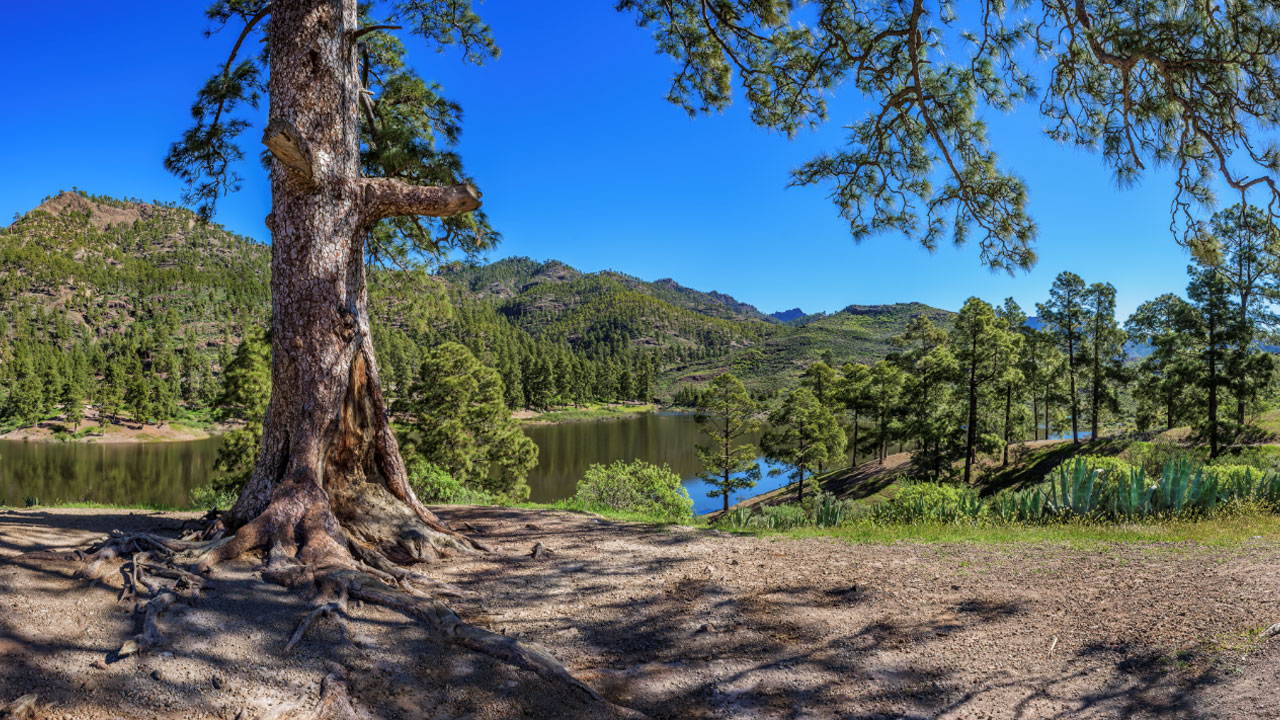
Close up, the reservoir’s deep eyes and still waters bring out the beauty of the stone. The Ansite Fortress stands proudly in the ravine guarded by cliffs and gullies, protecting a setting that was home to the ancient aboriginal population 1,400 years ago. According to our chronicles, this is where they held out to the very end against the invaders and the spirit of this lost civilisation seems to have been etched on every rock.
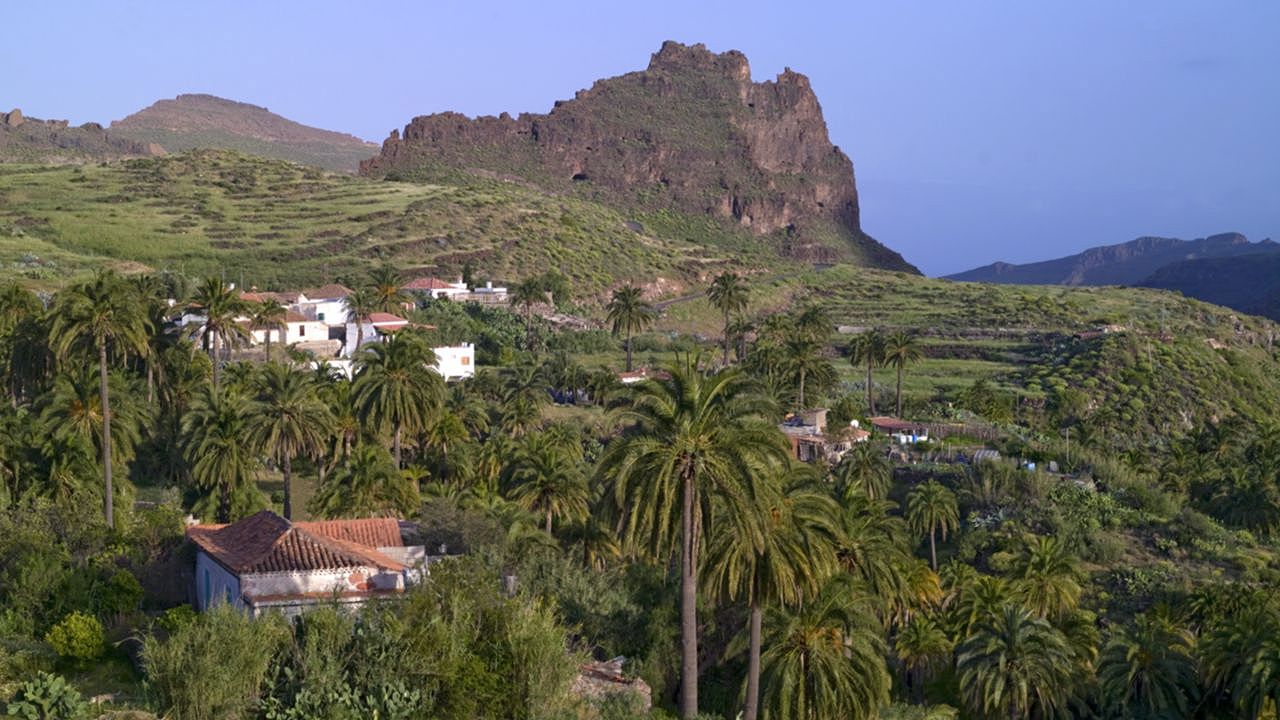
A current of warm breeze now blows you up and over a white hamlet riddled with intricate streets, a warren of lanes in the heart of Fataga, one of the largest ravines in Gran Canaria. The giant rocks that guard the valley protect an oasis of palm trees, orange trees, fruit orchards, houseleeks, rutas and other endemic botanical species that reveal the island’s unique natural world.
This flight over the ravines will soon swoop over another of Gran Canaria’s great geographic scars, the Guayadeque, worthy of its declaration as a Natural Monument. The majestic environment speaks to us through endemic species such as the language of birds and their flowers, that invoke both dusk and dawn. This is also home to yellow broom and European olive trees, thousand-year-old neighbours in a place littered with the remains of cave dwelling populations, alongside cave paintings and etchings. What cannot be seen is also there, right at your feet.
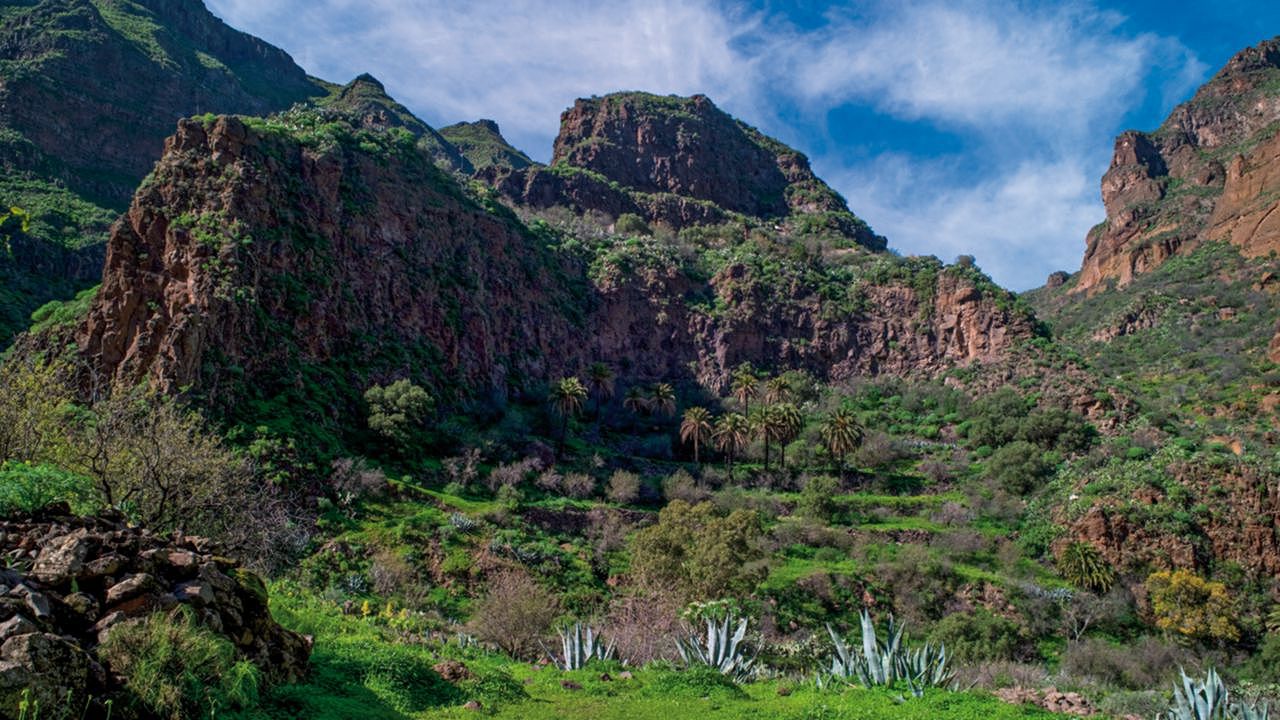
You spy a glimmer in the distance that is almost dazzling. Intrigue drives you forward to investigate the origin of this glow and when you finally discover its origin, you uncover a mystery that dates back to when the water met molten lava. Large rocky outcrops reveal themselves like green, reddish or yellow mirrors, geological whims with names such as Los Azulejos, glimmers of Gran Canaria’s volcanic soul.
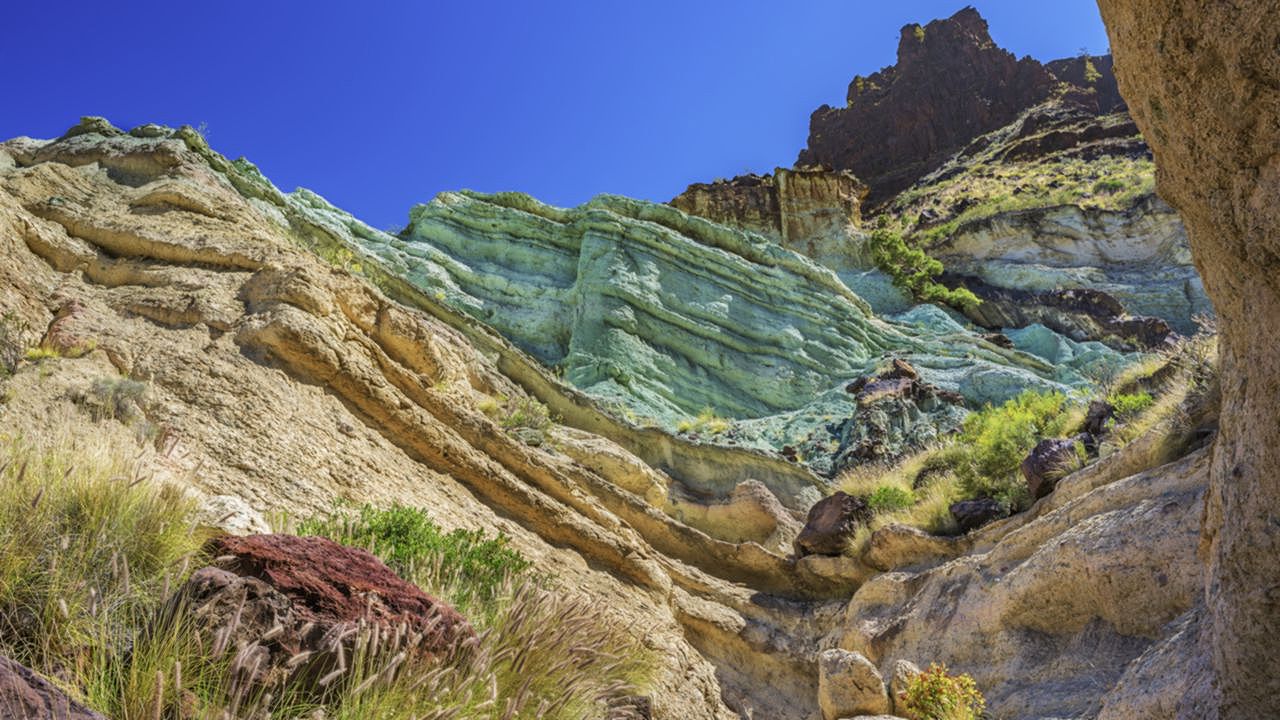
The view is submerged in water again, in the Presa de la Sorrueda reservoir and its procession of palm trees, before coming to a halt in the Pago de Temisas, another human settlement anchored in the stone that shines brightly with the light of liquid gold as it conceals old olive oil mills, some dating back to the 16th century.
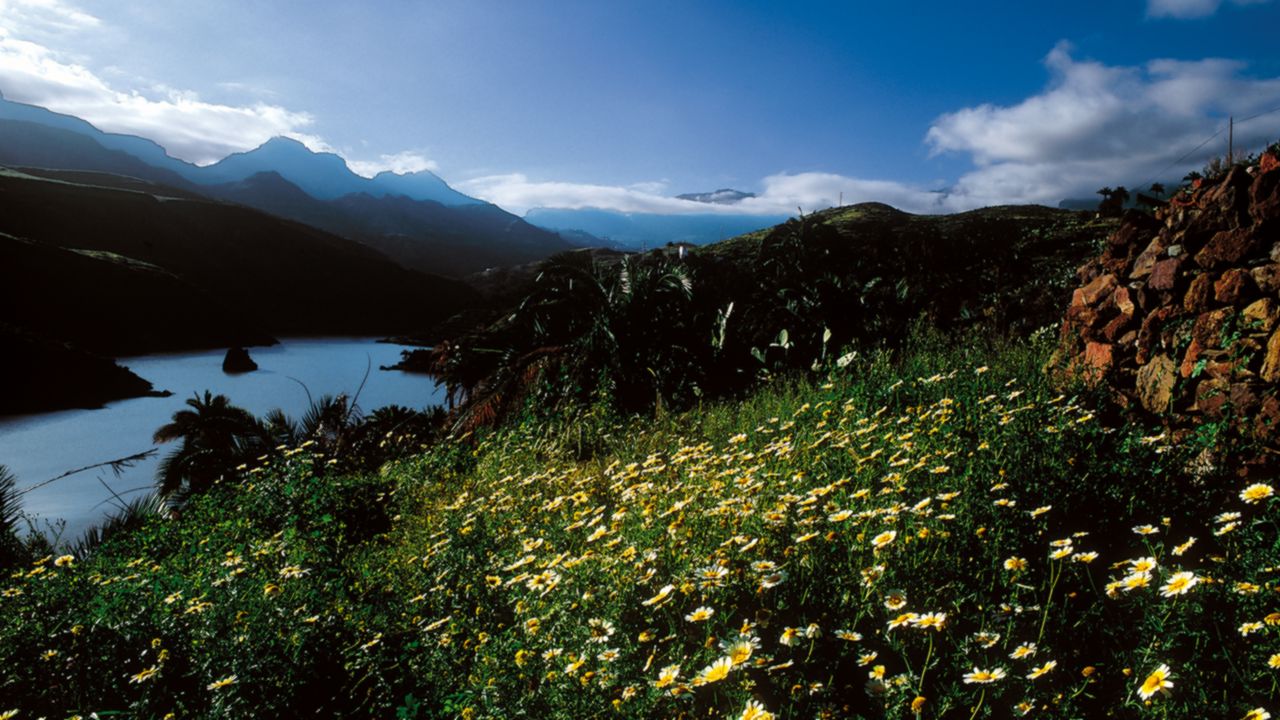
Now it’s time to spread your wings as far as you can and set your sights on the ocean. El Roque Guayedra presides over a ravine that hangs directly over the sea, creating an endless dance of white foam and black sand.
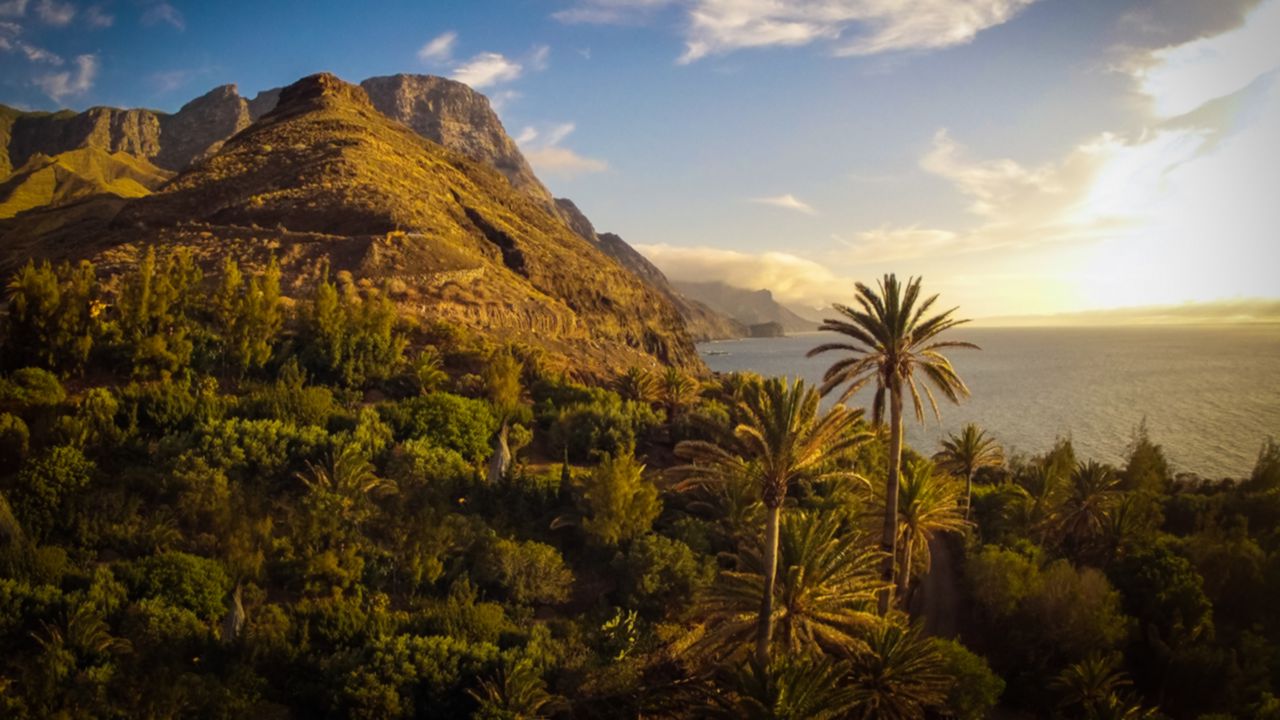
The seaside route starts here. As the Atlantic meets the coast of Gran Canaria, you’ll be spurred on along your voyage, letting the coastline lead the way this time. You'll be escorted on your journey by seagulls and a whole host of small sea birds taking you as far as the Puerto de las Nieves, the dock that holds thousands of memories of salty days under the sun, at the foot of the cliffs topped off with pine trees staring into the abyss, dips in transparent waters and days that were destined to never be forgotten.
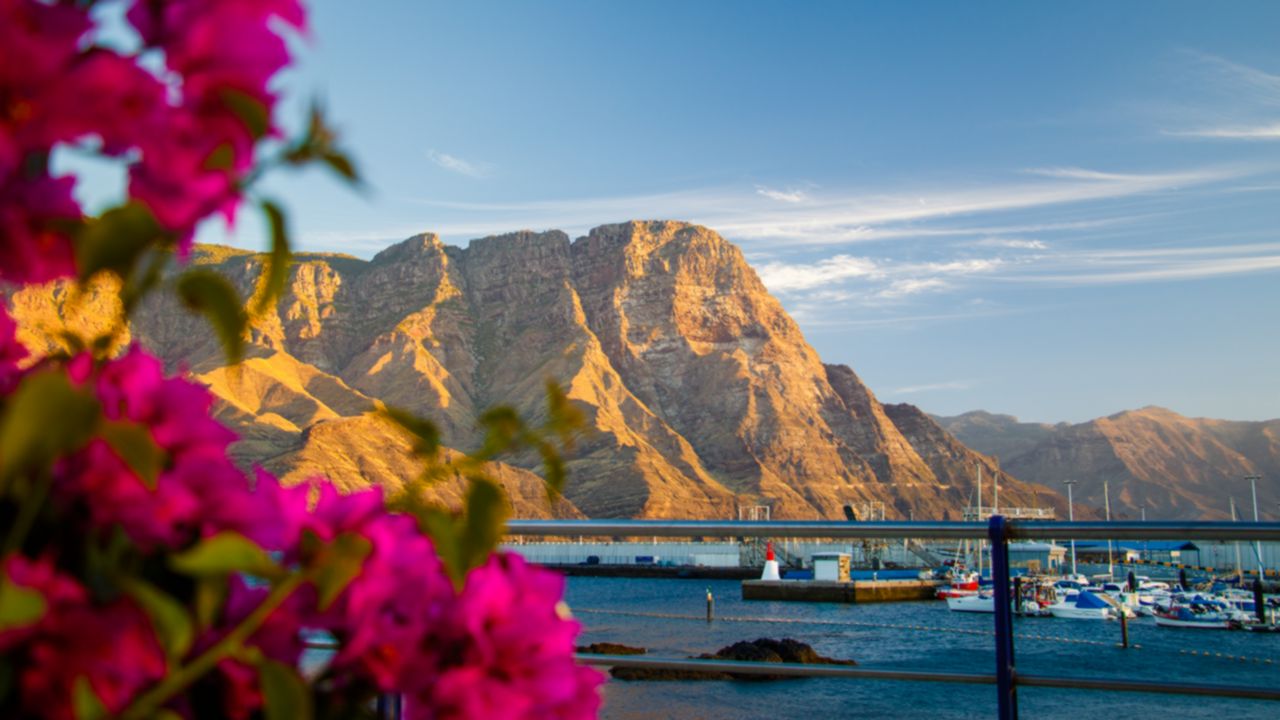
This flight of wishing and remembering turns towards the bay of Las Palmas de Gran Canaria, the island’s capital, a great Atlantic poem that fits the rhythm of the waves and the tides and reaches a crescendo in Las Canteras Beach, on the sand bank of Alcaravaneras or the Marina, where the boats are moored, waiting to be able to set off once again and fill their sails with the breeze promising good times to come.
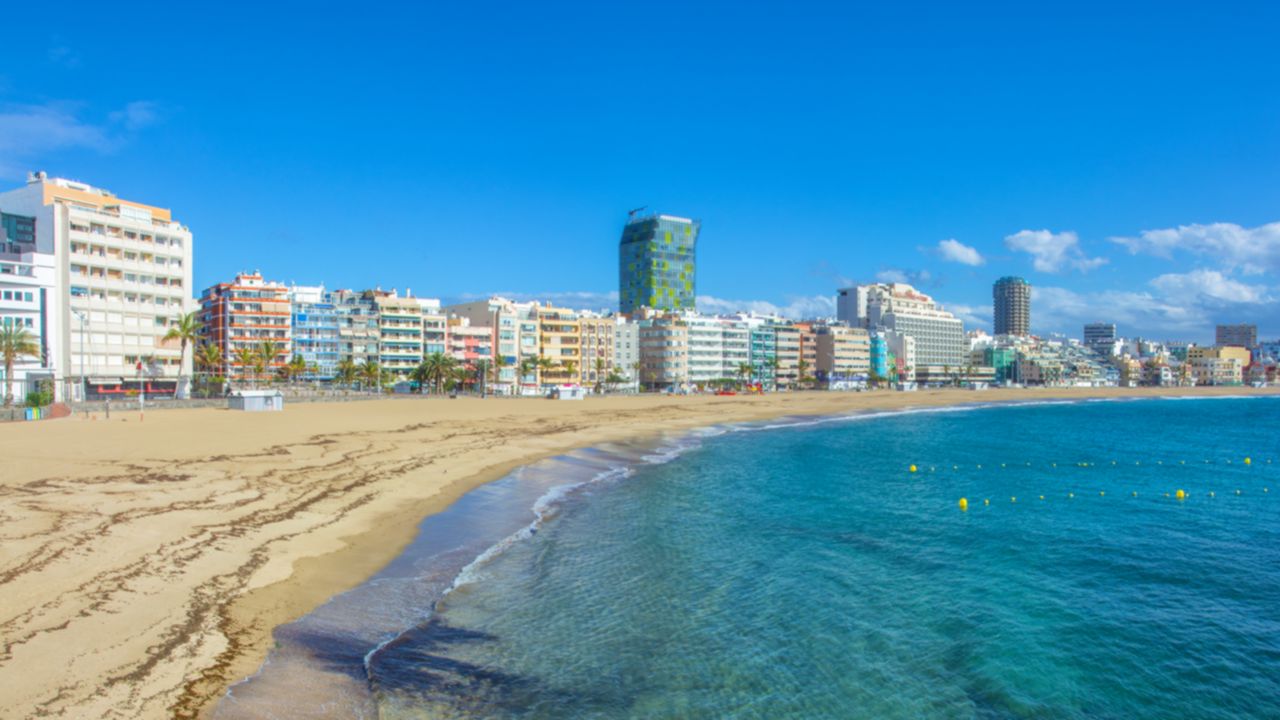
The South is calling you with its clear, luminous voice. From up high, the Maspalomas Dunes sketch out questions seeking answers. They are also waiting, yearning for the footprints over the sand that were erased by the wind. Maspalomas Lighthouse, that first winked at seafarers back in 1890, keeps on sending out its message of light through the darkness. At the most southerly point, on the Mogán coast, in the warm kingdom of calm, time is not frozen and nor does it stand still, it simply whispers sweet nothings on the shores and counts the days that are left for this imaginary flight to touch down on Gran Canaria’s land and sea.
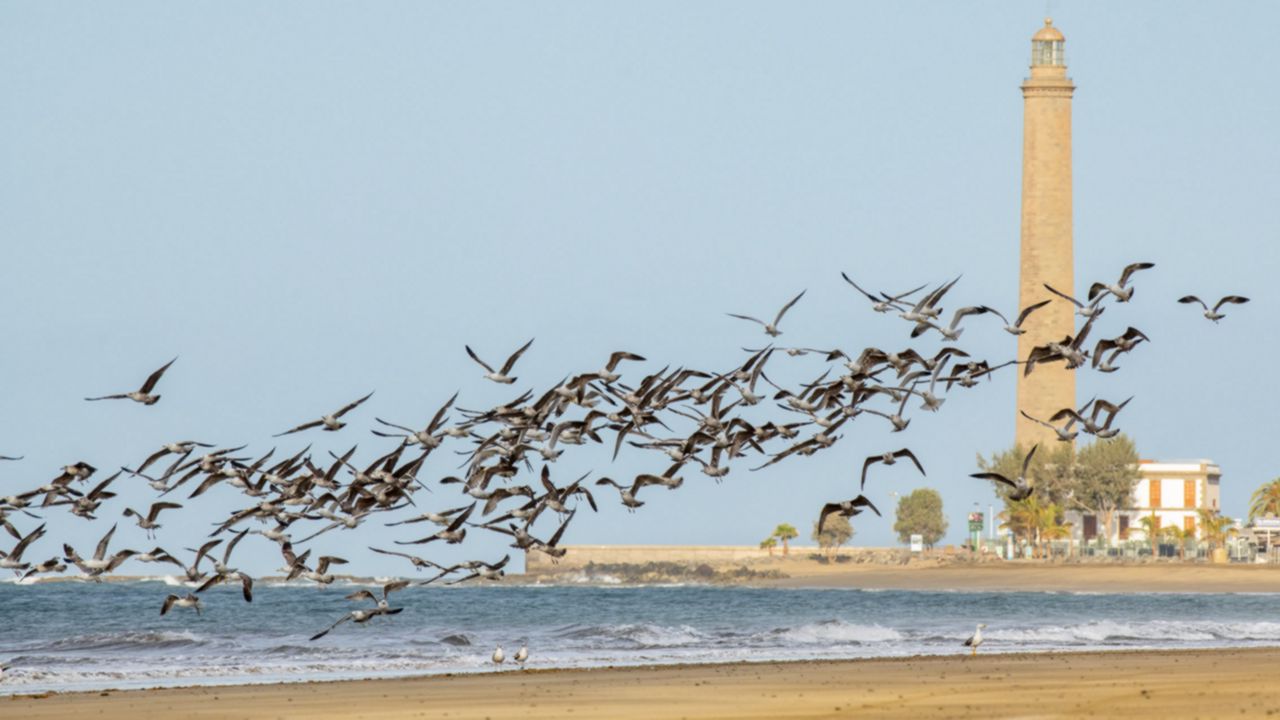


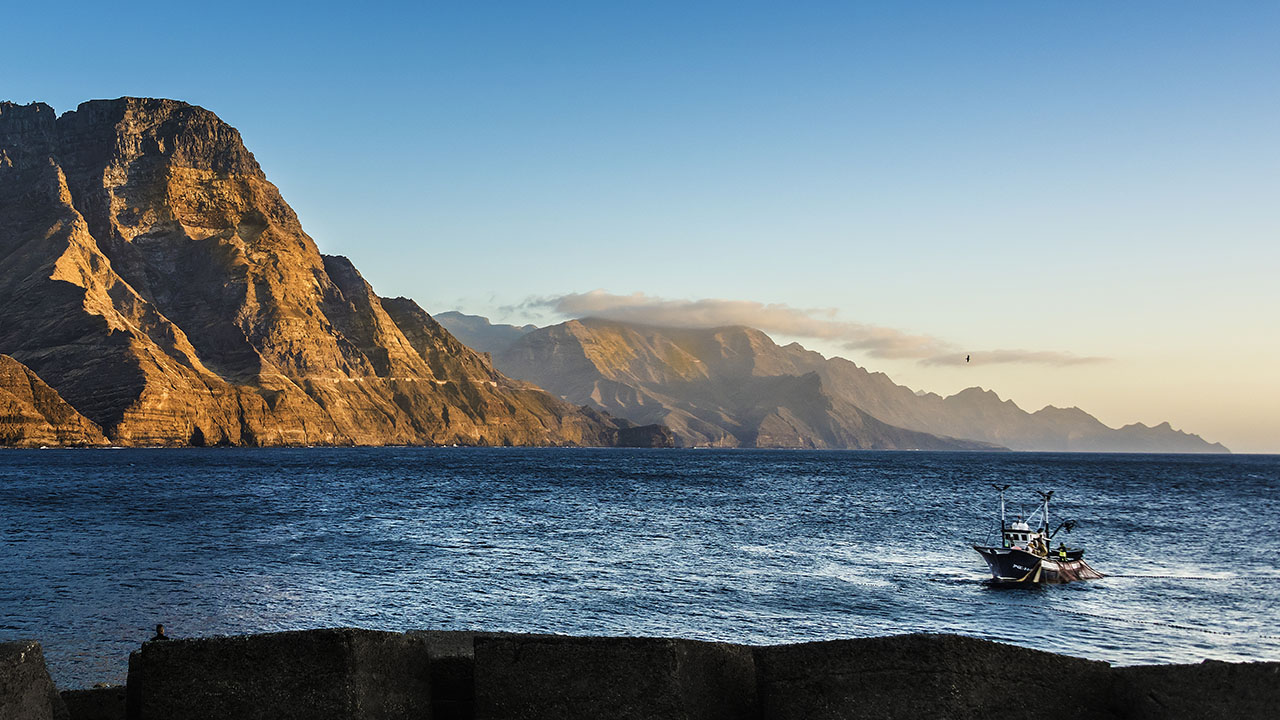
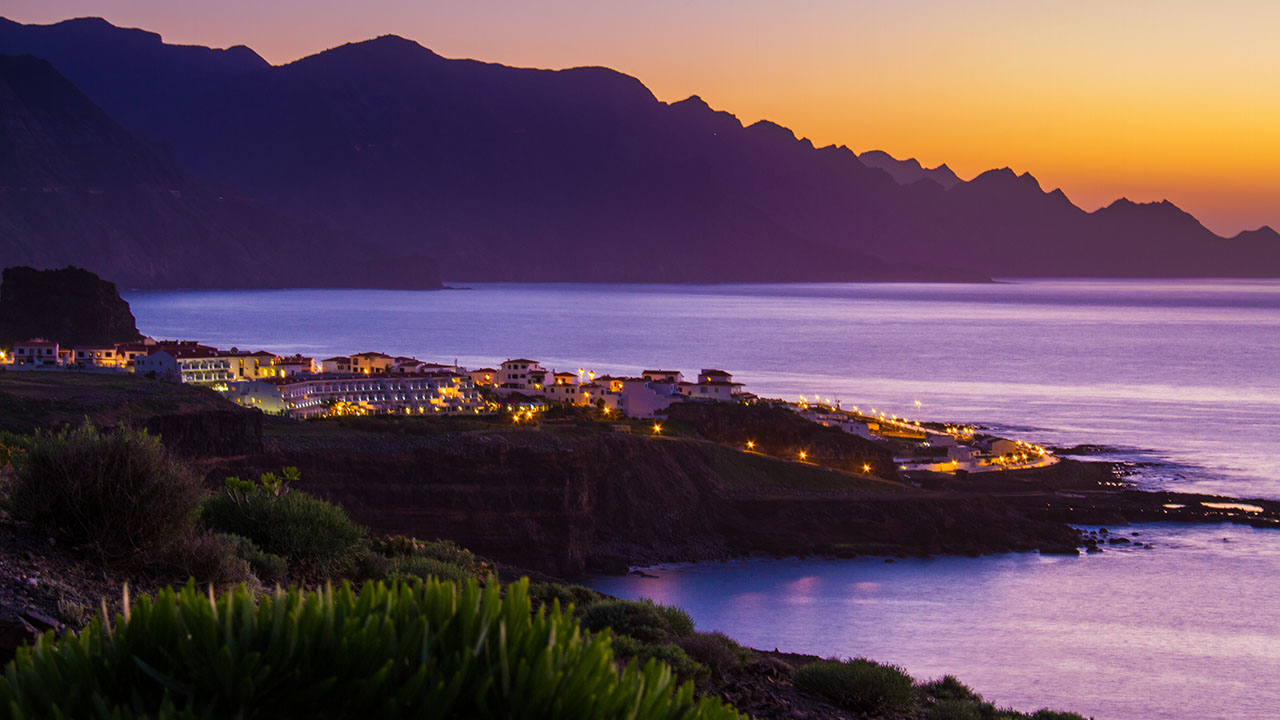
Comments are disabled for this post.